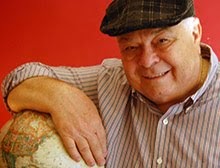 |
| Viennese coffeehouses like Cafe Central have been popular since 1683 (wikipedia) |
Like English pubs and sidewalk cafes in Paris , Vienna
 |
| Viennese coffeehouses are a way of life in Austria (wikipedia) |
The roots of the Kaffeehaus can be traced to the 17th century when Vienna United States
In the aftermath of the battle, the victorious
army captured a considerable supply of coffee beans that had been abandoned
outside the city gates. Initially believed to be food for the Muslim camels,
one of the Polish officers recognized the true value of the beans and asked
King Jan Sobieski for ownership. The request was granted and, before long, the
tradition of the Viennese coffeehouse was established.
The German word for relaxation in an unhurried
manner with pleasantness and peace of mind is gemütlichkeit. The Viennese like to think of their coffeehouses as
“having a soul.” It is an accurate and appropriate description for each of Vienna Vienna
 |
| Coffeehouses are a pageant in Vienna (wikipedia) |
Three traditions are an integral aspect of a
typical Viennese coffeehouse: There is always a huge selection of newspapers.
Water is served with the coffee. Stay as long as you like.
It is also important to understand the
intangible aspects that give the individual coffee cafes a life of their own,
however. Some are better suited for morning discussions of global or national
events, while others are equipped for pre or post-theater socializing. It is
helpful to know the differences in order to have a total coffeehouse
experience.
With those thoughts in mind, here is a
traveler’s sampler to provide a basic introduction into the world of Viennese coffee.
It is not meant to be definitive in any way, but purely to offer a bit of
insight into a truly unique travel experience.
 |
| Chocolates are huge part of the coffeehouse tradition in Vienna (wikipedia) |
We begin with Café Central because it is one of the best known, and said to be the grandest, of all
coffeehouses in Vienna
 |
| Cafe Demel dates to the 18th century and is one of the most popular coffeehouses in Vienna (wikipedia) |
Café
Demel is another favorite.
Designed in Baroque style and situated near the Hofburg
Palace , Demel is part of Vienna
 |
| Buchteln are popular sweet buns at Cafe Hawelka (wikipedia) |
Karl Kraus, the famous essayist once wrote, “Old Vienna was once new.”
Not true if you visit Café Hawelka. Hawelka is traditional as it can get in Vienna
CaféSacher gets a nod because it
is part of the world famous Hotel Sacher which created the even more famous
chocolate dessert known as Sacher Torte. The open terrace setting facing the
Vienna Opera House creates a delightful ambience during the summer. Open from 8
am to midnight, and any time of day or night is a good time to visit.
 |
| The Sacher Torte is a world famous, scrumptious dessert (wikipedia) |
No trip to Vienna Albertina Square
 |
| Try a "little night music" at the popular Mozart Cafe (wikipedia) |
By the way, if you shy away from tradition,
there’s always Starbucks. There are nine of them in Vienna







































